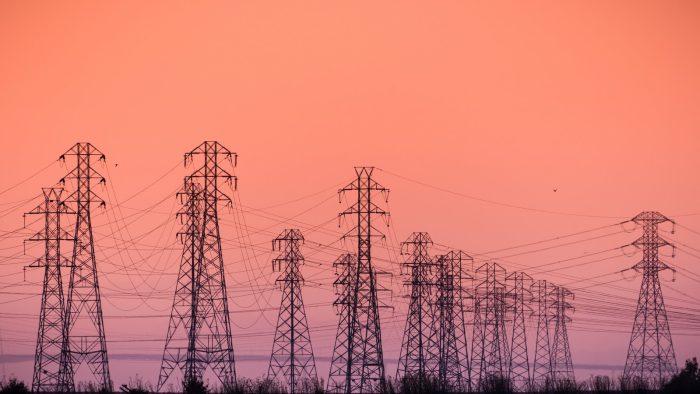
There are emerging opportunities for solar developers to work with alternative transmission technology providers on pilots and full scale projects that can help improve the grid. These opportunities are being funded by both state and federal programs aimed at grid improvements —including distribution activities — which benefit a broad spectrum of affected consumers, businesses, utilities and commissions, suggested state and federal officials whom took part in a March 12 webinar hosted by the World Resources Institute.
Entitled Getting the Most from Existing & New Infrastructure via Advanced Transmission Technologies, the webinar sought to review several new Grid Enhancing Technologies (GETs), analyze trends in state and federal regulation involving the tech, and spotlight some successful examples of pilots and programs that have been adopted. The webinar was moderated by Jennie Chen Senior Manager of Clean Energy at WRI and developed by Ian Goldsmith, WRI Research Analyst.
While new transmission technology has become a major focus of both state and federal regulators, the interaction between transmission and distribution systems via that tech is also key, agreed webinar participants.
“At the state level we’ve certainly been tackling the deployment of different distribution level technologies and I think that that cannot be understated,” said Marissa Gillett, Chairman, Public Utility Regulatory Authority of Connecticut, one webinar participant.
Chen noted that the Department of Energy released a new study on the needs of the grid in February 2023, the National Transmission Needs Study. According to analysis by law firm Perkins Coie, the study “acknowledged that alternative solutions — such as energy storage, grid-enhancing technologies, advanced conducting, and ‘strategic siting’ of generating resources — could defer or avoid the need for some large transmission infrastructure projects.”
Allison Clements, Commissioner, Federal Energy Regulatory Commission (FERC), another webinar participant, stressed that a crucial reason for seeking to incorporate new technology into grid reform is speed.
“As a technology-driven, power-driven country, we need to figure out how to make easy quick investments that can help us in the near term to modernize the grid, as well as working on medium-term and longer-term, more difficult investments in new regional and inter-regional transmission,” she summarized.

New incubators for new technology
Among a few of the alternative technologies for grid improvement highlighted in the webinar were advanced cable conductor designs, dynamic weather monitoring for line conditions, power flow controllers, high-cable-density tower designs, and expanded right-of-way space to allow for parallel tower lines.
One incubator for the demonstration of the cost/benefit of new transmission technology is the State of Connecticut’s Innovative Energy Solutions Program, launched in early 2023.
“The program is like a regulatory sandbox that offers different pathways by which an idea can come to us,” explained Gillett.
“The program is trying to take lessons learned from Silicon Valley and model after the ‘fail fast methodology’ [Fail fast is the principle of freely experimenting and learning while trying to reach the desired result.] So, we are starting with a shark tank event where we’re soliciting ideas from a utility, or a utility that is paired with a developer, or a developer alone. We award up to $5 million per project and [up to a combined] $25 million per cycle, allowing 18 months to demonstrate viability and scalability,” said Gillett.
Learning from neighbors
Part of the challenge of adopting new grid technology is avoiding the re-invention of the wheel by cautious state regulators, pointed out Gillett.
“State regulators, or different regional authorities often want to pilot something even if it has been proven in another area. I think that can be very frustrating for proponents of new technologies, she said.
One way that state regulators can readily weigh the value of pilot projects in other states is through rich data, pointed out Gilbert Bindewald, Principal Deputy Assistant Secretary, Office of Electricity, Department of Energy (DOE).
DOE has been working with the Idaho National Laboratory and Lawrence Berkeley National Laboratory to develop new grid technology analysis tools that can measure pilot data, permitting technology-to-technology comparisons, Bindewald noted.
The research is aimed at “being able to have the data that shows both the lifetime performance attributes and the costs and benefits that may accrue [from a given technology solution] and be able to share those with the decision makers. This enables weighing various technology options that are out there against one another,” Bindewald said.
“At the end of the day, all of these [regulatory or utility] decisions benefit from being able to have accurate, robust sets of data to be able to draw on. It’s about creating data that others can be able to utilize and learn from, so that they can be able to understand what the impact is, perhaps [across] their region,” Bindewald explained.
Such technology comparison software helps compare the bottom line for new investment in grid enhancement.
“It might cost around $2 million per mile to build new transmission lines but using an advanced conductor [in place of a traditional power line conductor] might be quite a bit cheaper than redoing the entire thing,” pointed out Bindewald.
Restructuring state and federal incentives to utilities to reward innovation in the adoption of new technology for transmission remains a major challenge in the grid reform space, the participants agreed.
At FERC, “we have the authority…to provide incentives to advanced technologies, and performance-based incentives…are contemplated,” noted Clements. “We haven’t [yet] made much progress on that front for grid enhancing technologies, but we have had a proposal from a coalition of providers of advanced technologies, as well as some trade associations, saying ‘let’s come up with a shared savings mechanism,’” she added.
Charles W. Thurston is a contributor to Solar Builder.
— Solar Builder magazine
[source: https://solarbuildermag.com/news/getting-up-to-speed-on-grid-enhancing-tech/]



Leave a Reply
You must be logged in to post a comment.